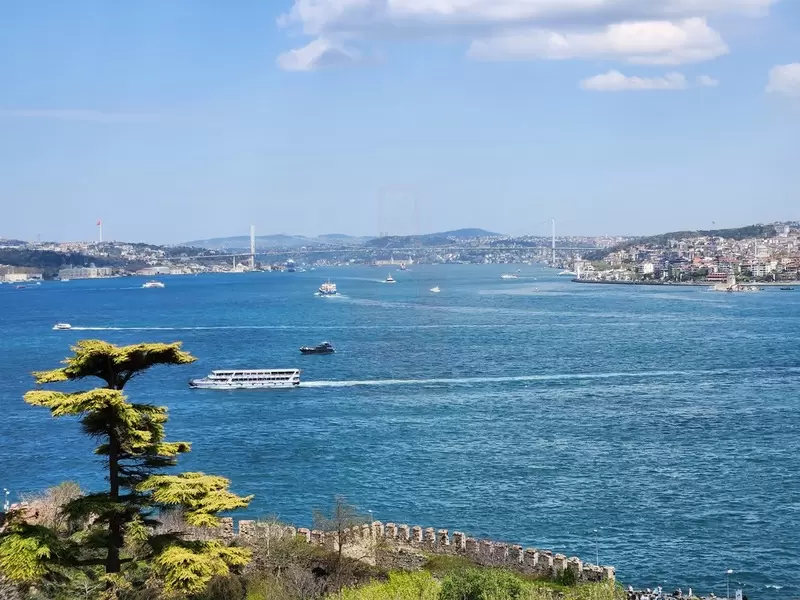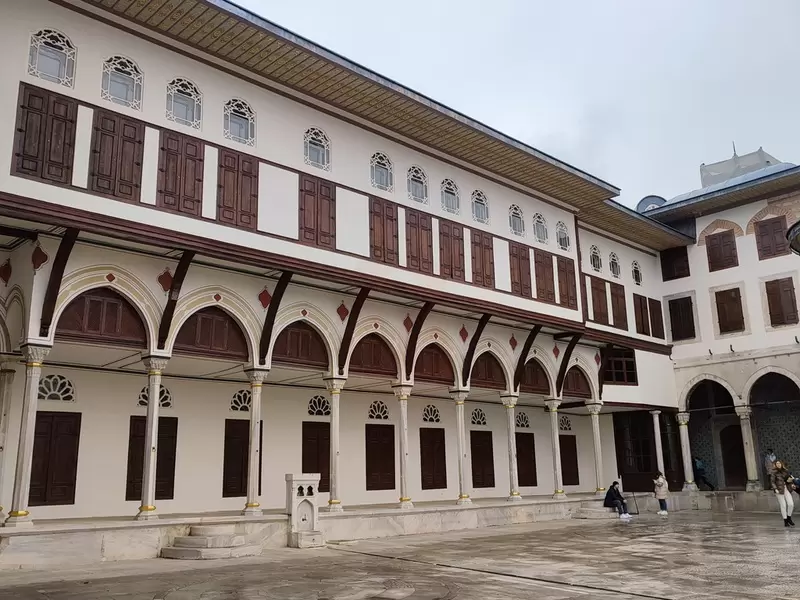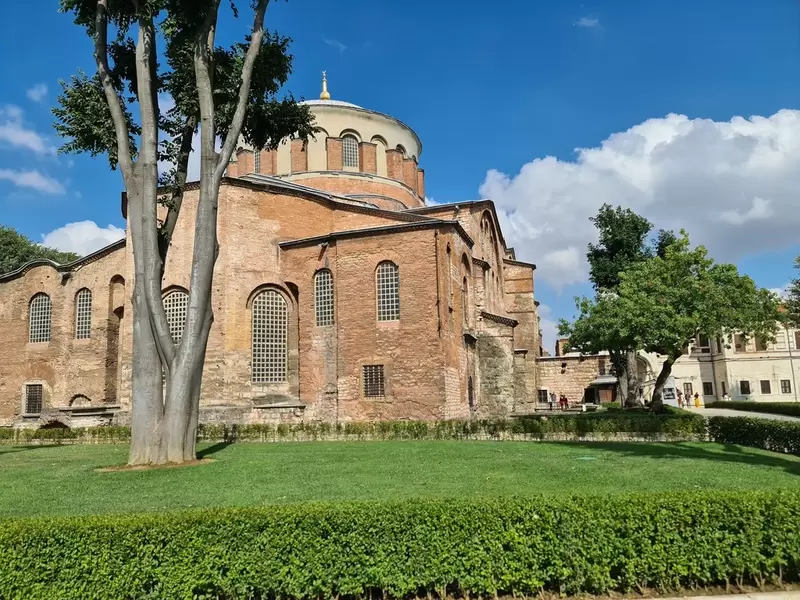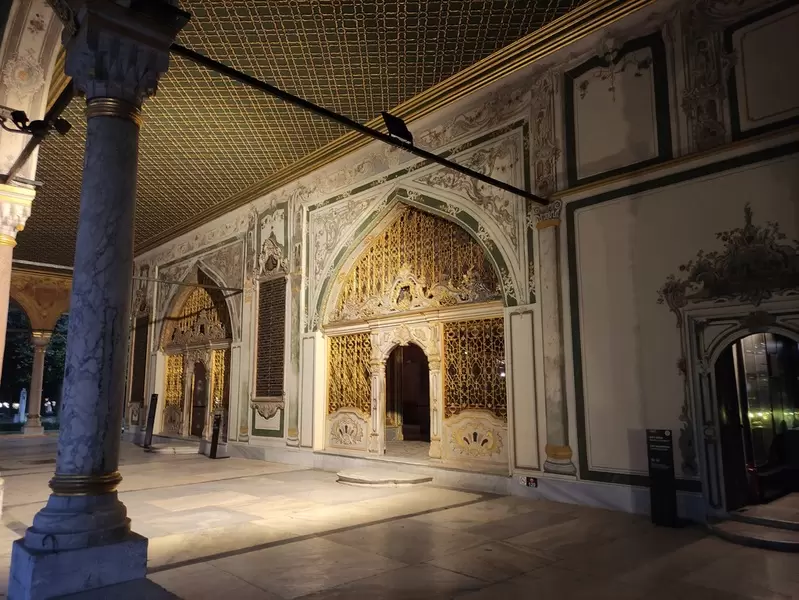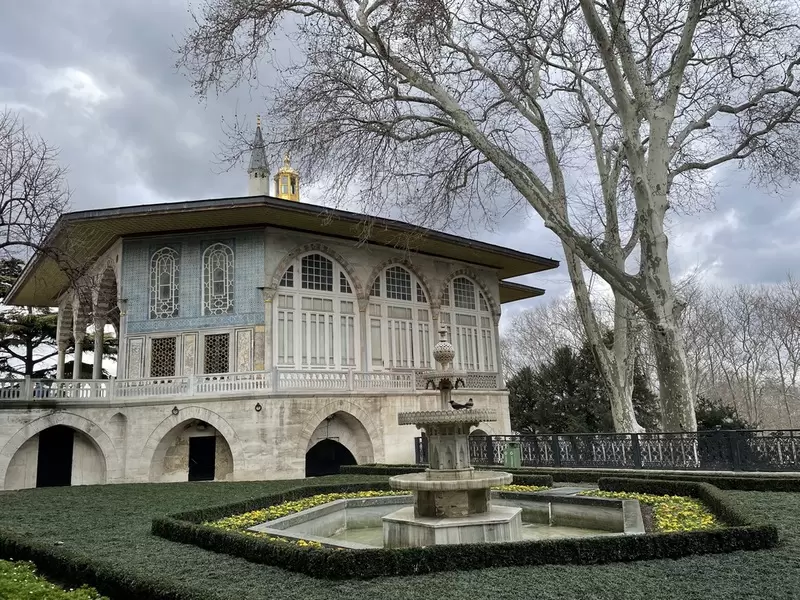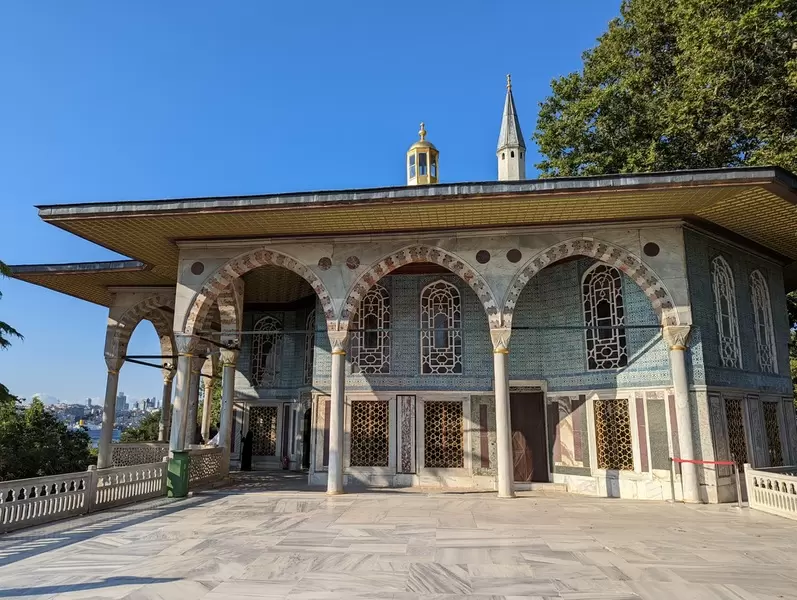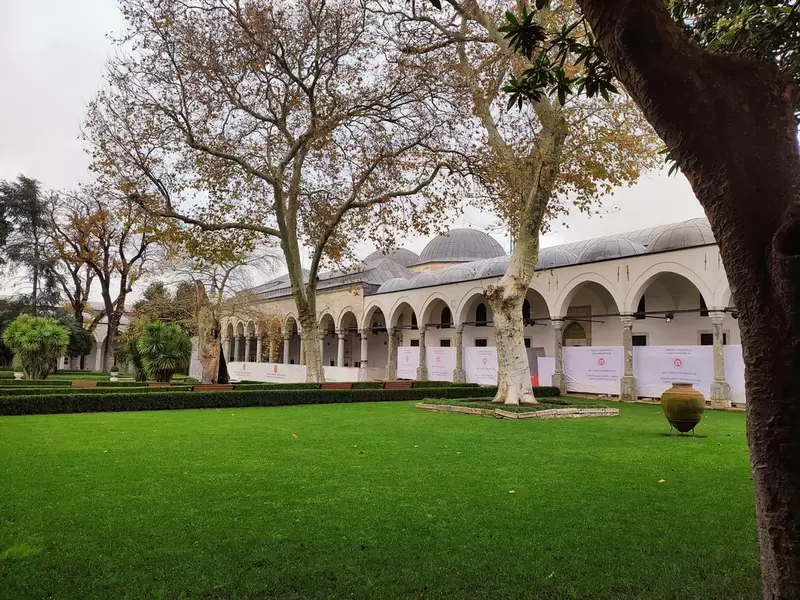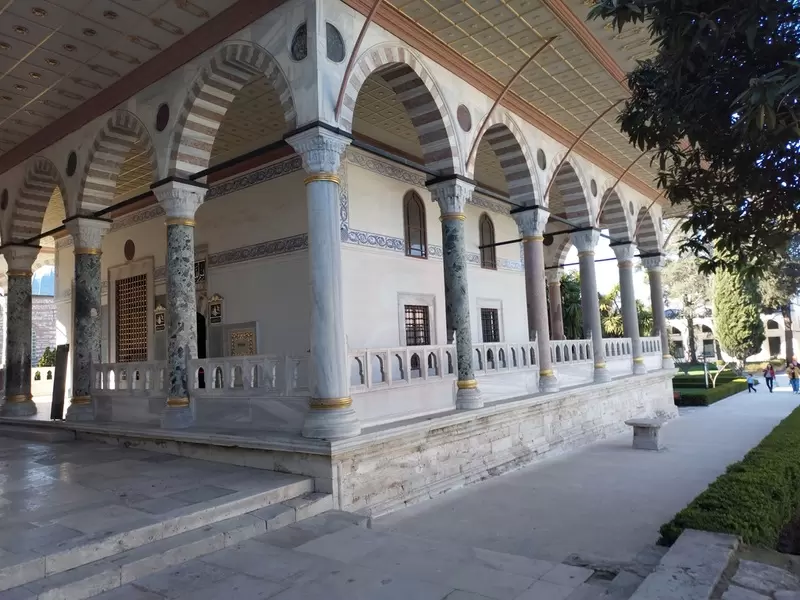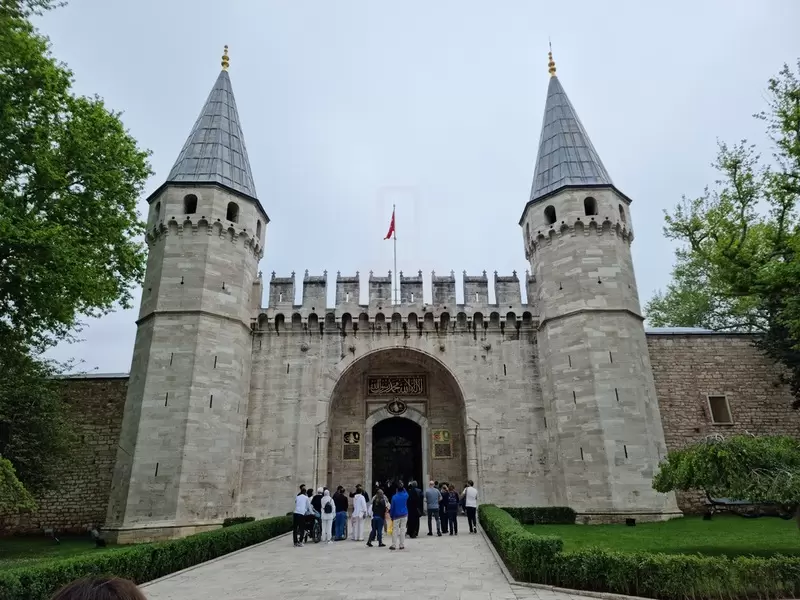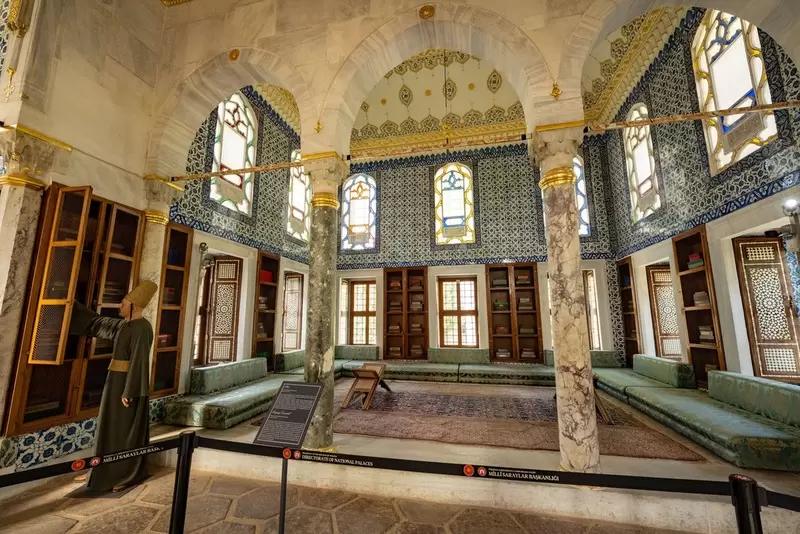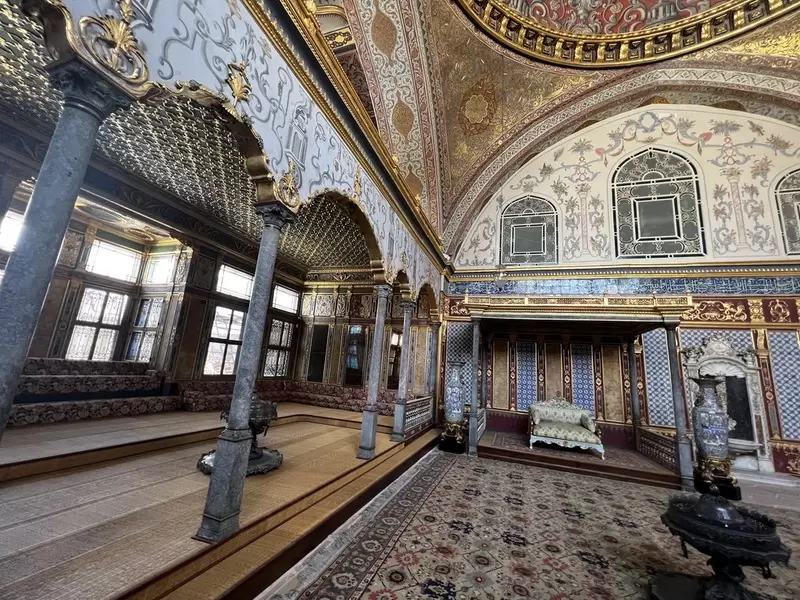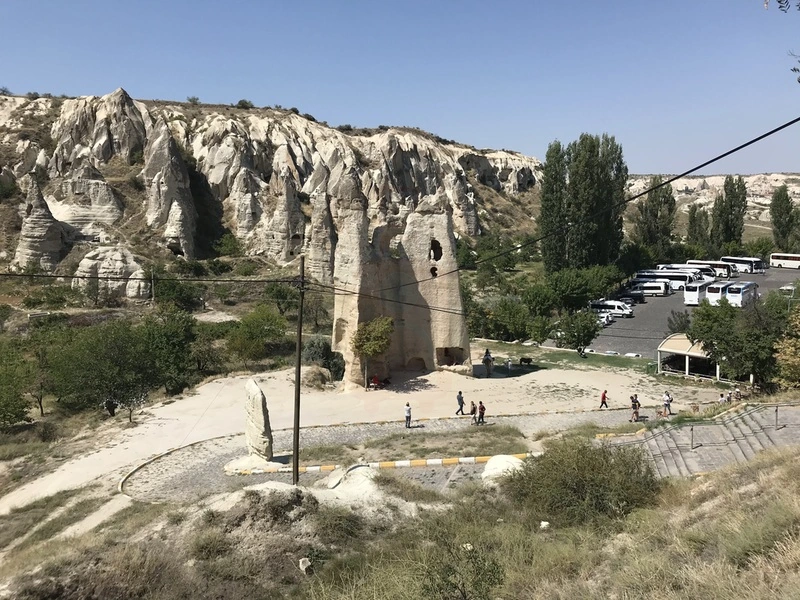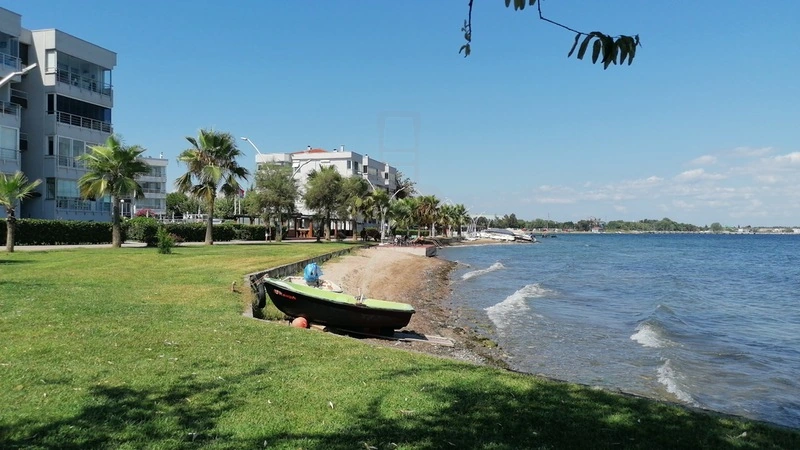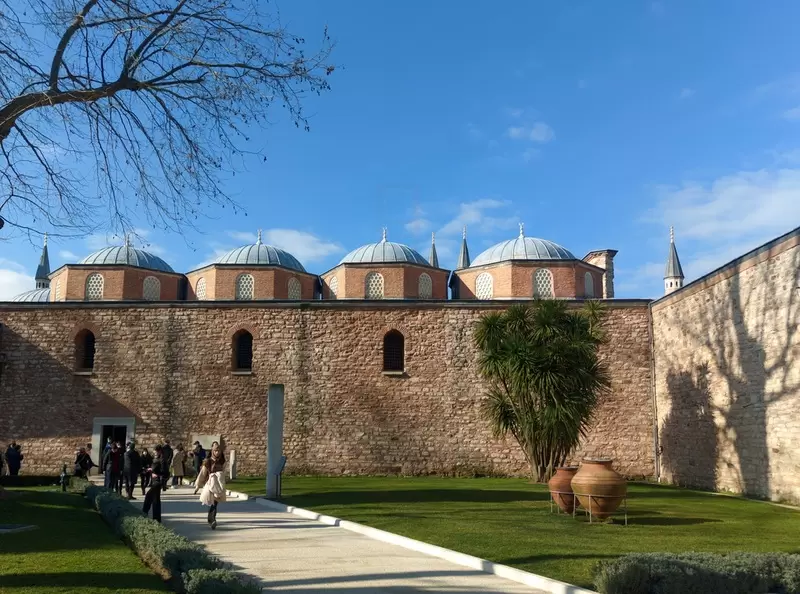
Topkapı Palace (Turkish: Topkapı Sarayı) is a palace in Istanbul, Turkey. It was the primary residence of the Ottoman sultans from the 15th to the 19th centuries. The palace is located on the eastern tip of the peninsula of Sarayburnu, overlooking the Bosphorus and the Golden Horn. The palace complex consists of four main courtyards, each with its own gate. The first courtyard is the Outer Courtyard, which is open to the public. The second courtyard is the Inner Courtyard, which is the main courtyard of the palace. The third courtyard is the Privy Courtyard, which is the private area of the palace. The fourth courtyard is the Harem, which is the women's quarters of the palace. The palace is open to the public, and is one of the most popular tourist attractions in Istanbul.
1. History: Topkapı Palace was constructed in the 15th century, shortly after the Ottoman conquest of Constantinople (present-day Istanbul) by Sultan Mehmed the Conqueror. Over the centuries, subsequent sultans expanded and modified the palace complex, resulting in its present-day grandeur.
2. Architecture and Layout: The palace complex covers a vast area, including courtyards, gardens, and multiple buildings. It is situated on a promontory overlooking the Bosphorus Strait, providing stunning views of Istanbul. The architecture is a blend of various styles, including Byzantine, Islamic, and Ottoman.
3. Function and Significance: Topkapı Palace served as the political and administrative center of the Ottoman Empire. It was not only the residence of the sultans and their families but also the setting for important state functions, including official ceremonies, receptions, and meetings with foreign dignitaries. The palace housed various offices, libraries, mosques, schools, and other facilities.
4. Imperial Harem: One of the notable sections within Topkapı Palace is the Imperial Harem. It was the private living quarters of the sultan's family, including his wives, concubines, and children. The Harem consists of several rooms, courtyards, and apartments, offering insights into the daily lives and rituals of the Ottoman court.
5. Collections and Exhibits: Today, Topkapı Palace functions as a museum showcasing a vast collection of Ottoman treasures, including artworks, manuscripts, jewelry, arms, armor, ceramics, textiles, and religious artifacts. The museum's exhibits provide visitors with a glimpse into the opulence, artistic achievements, and cultural heritage of the Ottoman Empire.
6. Notable Sections: The palace complex features several notable sections that visitors can explore. These include the Imperial Council Chamber, where important state decisions were made, the Treasury, which houses a collection of precious items, the Imperial Kitchen, showcasing the palace's culinary traditions, and the Sultan's private chambers.
7. Gardens and Views: Topkapı Palace boasts beautiful gardens and courtyards that offer a serene atmosphere amidst the bustling city. The Palace Gardens provide a tranquil escape and present an opportunity to appreciate the palace's exterior architecture, as well as enjoy scenic vistas of the Bosphorus and Istanbul.
8. Visiting Information: Topkapı Palace is a popular tourist attraction and is open to the public. It is advisable to check the official website for the most up-to-date information on visiting hours, admission fees, and any special exhibitions or events. Due to its popularity, it is recommended to arrive early to avoid crowds.
Topkapı Palace stands as a testament to the grandeur and splendor of the Ottoman Empire. Its rich history, architectural beauty, and extensive collections make it a must-visit destination for those interested in Ottoman culture, history, and art.
